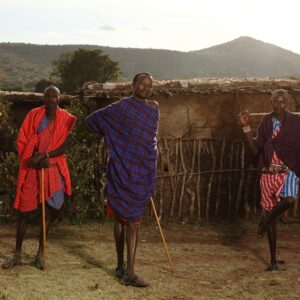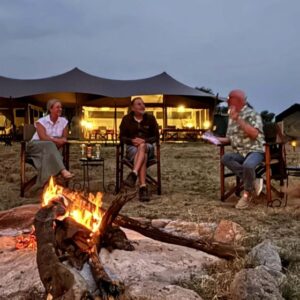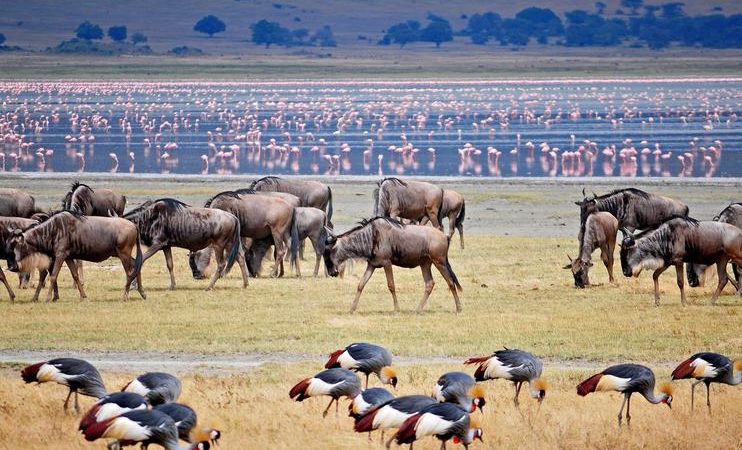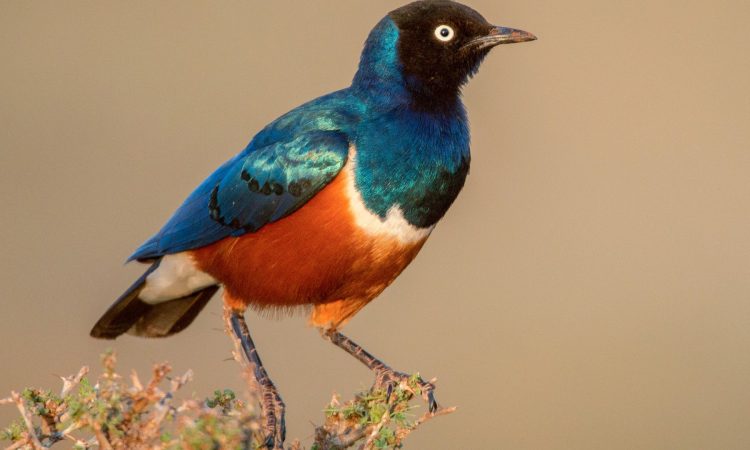Mount Kilimanjaro, as the world’s tallest free-standing mountain and Africa’s highest peak, belongs on your bucket list due to its unparalleled status as a “Seven Summit,” its accessibility for a broad range of hikers, and the breathtaking experience of ascending through multiple climate zones to witness incredible vistas and diverse ecosystems. Mount Kilimanjaro, Africa’s highest peak, is a name that resonates with adventure, challenge, and awe-inspiring beauty. Standing majestically at 5,895 meters (19,341 feet), this dormant volcano in Tanzania offers not just a climb but an experience of a lifetime. Whether you are an avid trekker or someone seeking a transformative journey, here are compelling reasons why Mount Kilimanjaro must be on your bucket list. Standing majestically on the plains of Tanzania, Hiking Mount Kilimanjaro isn’t just a mountain. It’s a monumental challenge, a natural wonder, and an experience that etches itself into your soul. For adventurers, nature enthusiasts, and those seeking to push their limits. Kilimanjaro isn’t merely a destination—it’s a pilgrimage. If you’re compiling your ultimate travel bucket list, here’s why the “Roof of Africa” deserves a prime spot.
Experience the Roof of Africa
Kilimanjaro holds the prestigious title of being the highest free-standing mountain in the world and Africa’s highest peak. Soaring to an impressive 5,895 meters (19,341 feet) above sea level. Imagine standing at that altitude, gazing out over a sea of clouds as the sun rises. Casting a golden glow across the continent. This isn’t just about reaching a summit. It’s about experiencing the sheer scale of nature and witnessing panoramic views that few others ever will. The feeling of Mount Kilimanjaro hiking tours of conquering such a towering giant is unparalleled. Offering a perspective on the world that is truly humbling.
One of the Seven Summits
For serious mountaineers and avid adventurers, Kilimanjaro holds another significant distinction: it’s one of the Seven Summits. These are the highest mountains on each of the seven continents, and bagging even one is a remarkable feat. For many, Kilimanjaro serves as an accessible entry point into this elite club. Offering the thrill of a high-altitude climb without the extreme technical demands of peaks like Everest or Denali. Successfully summiting Kilimanjaro places you among a select group of global adventurers.
A Diverse Range of Climatic Zones
One of Kilimanjaro’s most captivating aspects is its incredible ecological diversity. As you ascend from the base to the summit. You traverse through five distinct climatic zones, each with its unique flora and fauna. You’ll begin in lush cultivation and rainforest, where the air is thick with humidity and the sounds of exotic birds fill the trees. As you climb higher, the landscape transforms into heath and moorland. Followed by the high-altitude desert zone, characterized by its stark beauty. Finally, you’ll reach the Arctic zone, where glaciers cling to the summit—a stark and surreal contrast to the tropical warmth below. This journey through different ecosystems in a matter of days is a natural spectacle in itself.
Rich Biodiversity and Wildlife
Beyond the changing landscapes, Mount Kilimanjaro is a haven for rich biodiversity and wildlife. While you won’t encounter the “Big Five” on the mountain itself. The lower slopes and surrounding areas are home to a fascinating array of creatures in Kilimanjaro National Park. Keep an eye out for Colobus monkeys swinging through the forest canopy, various bird species, and even elusive antelopes. The unique plant life, adapted to the varying altitudes, adds another layer of natural wonder to the trek. This immersion in a vibrant ecosystem enhances the overall exceptional Kilimanjaro adventure. Reminding you of the delicate balance of nature.
Cultural Immersion with the Chagga People
Climbing Mount Kilimanjaro is not just about reaching the summit. It’s also about immersing yourself in the local culture. Your Kilimanjaro adventure isn’t just about the mountain; it’s also an opportunity for cultural immersion with the Chagga people. Living on the fertile lower slopes of Kilimanjaro. The Chagga have a rich history and a strong connection to the mountain. Many of the guides and porters who facilitate your climb come from this community. Engaging with them offers a profound insight into their way of life, traditions, and deep respect for Kilimanjaro. Their warmth, resilience, and stories add a unique human element to the journey. Making it more than just a physical challenge.
No Technical Climbing Skills Required
Unlike many other high peaks around the world. Mount Kilimanjaro does not require technical climbing skills. Perhaps one of the most appealing aspects of Kilimanjaro for aspiring climbers is that it requires no technical climbing skills. Unlike many other high peaks that demand ropes, harnesses, and extensive mountaineering experience. Kilimanjaro is primarily a demanding hike. This makes it accessible to a wider range of individuals, from beginners to seasoned trekkers to determined novices. While it’s a strenuous undertaking, requiring good physical fitness and mental fortitude. You won’t need specialized climbing techniques, opening the door for many to achieve this incredible feat.
Well-Organized Trekking Routes
Kilimanjaro boasts several well-organized trekking routes, each offering a different duration, challenge level, and scenic experience. Popular routes like Marangu, Machame, Lemosho, and Rongai are meticulously managed, with established camps, experienced guides, and dedicated support teams. This structured approach ensures safety and allows climbers to focus on the trek itself, knowing that logistics are expertly handled. The availability of diverse routes also means you can choose an option that best suits your fitness level and desired pace, maximizing your chances of a successful summit.
Climbing Mount Kilimanjaro, the highest peak in Africa, is a challenging yet feasible endeavor for active individuals, with success rates highest on longer routes of 7-8 days due to better acclimatization, which helps reduce the risk of Acute Mountain Sickness (AMS). The trek involves traversing diverse climatic zones, from tropical rainforests to glaciers, culminating at Uhuru Peak at 5,895 meters (19,341 feet).
A Test of Physical and Mental Endurance
While technical skills aren’t required, climbing Mount Kilimanjaro is undeniably a test of physical and mental endurance. The long days of trekking, the increasing altitude, and the cold at higher elevations will push your limits. However, this challenge is precisely what makes the achievement so rewarding. Every step forward is a victory, and overcoming discomfort fosters a deep sense of resilience. The camaraderie forged with your fellow trekkers and support team as you face these challenges together is also an unforgettable part of the experience. It’s an opportunity to discover your inner strength and prove to yourself what you’re truly capable of.
Before climbing Kilimanjaro, it’s important to understand that altitude sickness affects everyone differently, summit night is extremely challenging, and proper gear and preparation are crucial for success and safety. You’ll need to prepare for cold temperatures, especially on summit night, and understand the importance of acclimatization and hydration. Climbing Kilimanjaro as a beginner requires careful preparation, focusing on physical fitness, appropriate gear, route selection, and crucial acclimatization to mitigate altitude sickness. While it’s a non-technical climb and porters carry most of the gear, it demands significant stamina and mental fortitude due to long hiking hours, challenging terrain, and varying temperatures.
Stunning Sunrise at the Summit
The ultimate reward for all your efforts culminates in the stunning sunrise at the summit. After a challenging night climb, often starting around midnight, reaching Uhuru Peak just as the sun begins to paint the sky with vibrant hues is an emotional and awe-inspiring moment. Watching the world awaken from the highest point in Africa, with glaciers glistening in the dawn light, is a memory that will be etched in your mind forever. It’s a breathtaking testament to your perseverance and the natural beauty of our planet.
One of the most magical moments of the Kilimanjaro climb is witnessing the sunrise at the summit. As you reach Uhuru Peak in the early morning hours, the horizon begins to light up with hues of orange, pink, and gold. The sight of the sun rising above the clouds, illuminating the vast expanse below, is a truly awe-inspiring experience. This breathtaking moment makes the challenging climb worth every step.
A Bucket List Achievement
Mount Kilimanjaro is a symbol of adventure and exploration. Adding it to your bucket list means setting a goal that is both challenging and rewarding. Ultimately, climbing Mount Kilimanjaro is the epitome of a bucket list achievement. It’s more than just a physical challenge; it’s a journey of self-discovery, an immersion in nature, and a connection with a vibrant culture. The sense of accomplishment upon reaching the summit is profound, leaving you with memories and bragging rights that last a lifetime. It’s an experience that changes you, expanding your perspective and reminding you of the incredible power of human determination.
Climbing Kilimanjaro is a challenging but rewarding experience that requires thorough preparation, including choosing the right route and operator, focusing on acclimatization, and packing appropriately for varying conditions and altitude. The “slow and steady” approach, exemplified by the Swahili phrase “pole pole” (slowly, slowly), is crucial for managing altitude sickness, which is primarily caused by operating in a low-oxygen environment.
Supporting Sustainable Tourism
Choosing to climb Kilimanjaro also means supporting sustainable tourism. Reputable tour operators work diligently to minimize environmental impact, conserve the mountain’s delicate ecosystems, and ensure fair wages and treatment for their local staff. By embarking on this adventure, you contribute directly to the economic well-being of local communities and the ongoing preservation of this magnificent natural wonder.
It’s an opportunity to travel responsibly and make a positive impact. So, if you’re looking for an adventure that combines natural beauty, physical challenge, cultural immersion, and a profound sense of accomplishment, look no further than Mount Kilimanjaro. It’s not just a climb; it’s an unforgettable journey that will redefine your limits and leave you with a lifetime of cherished memories. Is it time to start planning your ascent to the Roof of Africa?
Practical Tips for Climbing Mount Kilimanjaro
Discover essential tips for Unforgettable climbing Mount Kilimanjaro, including the best routes, acclimatization advice. Packing essentials and how to prepare physically and mentally. A Mount Kilimanjaro guide is an essential resource for anyone planning to trek Africa’s highest peak, the world’s tallest free-standing mountain, and a UNESCO World Heritage site. These guides provide comprehensive information on everything from practical preparations like getting to Tanzania and selecting routes, to detailed insights on the trek itself, including daily walking hours, altitude sickness, and necessary gear. Ensure a safe and successful ascent to Africa’s highest peak with our practical guide.
Choose the Right Route. Selecting the appropriate Climb Mount Kilimanjaro route is crucial for your Kilimanjaro climb. Consider factors such as difficulty level, acclimatization, scenic beauty, and duration. Research each route thoroughly and choose one that aligns with your preferences and fitness level.
Acclimatization is Key. Altitude sickness is a common challenge on Kilimanjaro. Proper acclimatization is essential to increase your chances of reaching the summit. Opt for a longer route that allows for gradual acclimatization and follow the “climb high, sleep low” principle to minimize altitude-related issues.
Pack Wisely. Packing the right gear is vital for a successful climb. Ensure you have appropriate clothing for varying temperatures, sturdy hiking boots, a quality sleeping bag, and essential trekking gear. Layering is key to adapting to the changing weather conditions.
Stay Hydrated and Nourished. Maintaining proper hydration and nutrition is crucial during the climb. Drink plenty of water, eat high-energy foods, and carry snacks to keep your energy levels up for the world’s greatest bucket list adventures. Your guide will ensure you have access to clean drinking water and nutritious meals throughout the trek.
Listen to Your Guide. Experienced guides are invaluable on your Kilimanjaro journey. They provide essential support, monitor your health, and offer guidance on pace and acclimatization. Trust their expertise and follow their advice to ensure a safe and successful climb.
Mental Preparation. Climbing Kilimanjaro is as much a mental challenge as it is a physical one why Kilimanjaro is a great mountain for any bucket list. Stay positive, visualize your success, and keep a determined mindset Kilimanjaro Bucketlist Expedition. Mental preparation will help you push through difficult moments and stay focused on your goal. Discover Mount Kilimanjaro climbing with the Foot Slopes Tours and Safaris, leading Kilimanjaro Safari Agency & tour Operator.
Respect the Environment. The main reasons why Climbing Kilimanjaro should be on your Bucket List. Preserving the natural environment of Kilimanjaro is of utmost importance. Follow Leave No Trace principles, dispose of waste responsibly, and respect wildlife and plant life. Your responsible behavior ensures the mountain’s beauty remains intact for future adventurers.
What is so special about Mount Kilimanjaro? The majestic mountain is a snow-capped volcano. Located in Tanzania, Mount Kilimanjaro is Africa’s tallest mountain at about 5,895 meters (19,340 feet). It is the largest free-standing mountain rise in the world, meaning it is not part of a mountain range why Mount Kilimanjaro must be in your bucket list. 10 important things to know before climbing Kilimanjaro.
In conclusion: Kilimanjaro on your bucket list
Mount Kilimanjaro is not just a climb; it’s an extraordinary journey that offers breathtaking landscapes, cultural immersion, and a profound sense of achievement. Adding this iconic peak to your bucket list promises an adventure of a lifetime, filled with unforgettable moments and personal growth. So, lace up your hiking boots, pack your sense of adventure, and embark on a journey to the Roof of Africa. Book Kilimanjaro climbing, hiking, trekking tours, see reviews, photos, and map, adventures, expeditions, prices, cost, trip, holidays, all-inclusive packages suitable for family, couple, solo traveler, honeymoon, seniors!








